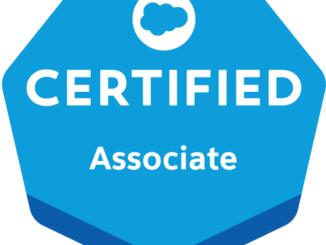In the fast-paced and ever-evolving world of business technology, Salesforce stands as a juggernaut, empowering organizations to streamline operations, drive sales, and enhance customer relationships. Yet, the full potential of this powerful CRM platform can only be harnessed when users are well-equipped with the knowledge and skills needed to navigate its complexities. This is where proper End User Training comes into play.
To start your journey for End User Training, you will need to develop a Training Needs Analysis (TNA) document. In this blog, we will explore the significance of TNA in the realm of Salesforce training, how to conduct an effective TNA, share real-life examples of its impact, and distill key takeaways emphasizing why TNA is crucial for successful Salesforce training programs.
The Role of Training Needs Analysis in Salesforce Training
Training Needs Analysis (TNA) is the systematic process of identifying gaps in knowledge, skills, and competencies within an organization. Its primary goal is to determine what training is necessary to bridge these gaps effectively. When it comes to Salesforce, TNA plays a pivotal role in ensuring that users are not just acquainted with the platform but are proficient in leveraging its functionalities to drive business growth.

Salesforce, with its myriad features and applications, can be overwhelming for new users. Without adequate training, users may struggle to grasp its full potential, resulting in underutilization of the platform and missed opportunities. TNA acts as a compass, guiding organizations towards tailored training solutions that address specific needs and pave the way for Salesforce adoption and success.
Conducting an Effective TNA
Step 1: Identify Training Objectives
The first step in conducting a TNA for Salesforce training is to clearly define the training objectives. What are the specific skills and knowledge areas that users need to excel in their roles? For instance, a sales team may require training in lead management, while customer support agents may need training in case management. Identifying these objectives provides a roadmap for the entire process.
Step 2: Gather Data
To conduct an effective TNA, organizations need to gather relevant data. This can be achieved through surveys, interviews, focus groups, and even analyzing existing performance data. Salesforce’s usage statistics and user feedback can be invaluable sources of information in this stage. Understanding current proficiency levels and user pain points is essential for pinpointing training needs accurately. Including in the data gathering needs to be equipment used (desktop only or also mobile), if the training needs to include process changes and if there are department or geographical differences.
Step 3: Analyze and Prioritize Needs
Once data is collected, it’s time to analyze and prioritize training needs. Some needs may be universal, while others might be role-specific. By categorizing needs, organizations can allocate resources efficiently and tailor training programs to address the most critical gaps first.
From the analysis you should be able to easily identify the different groups that will be targeted, the level of training each group needs, the length of the training sessions, the need for local translations and most importantly the change impact. Implementing Salesforce comes with change, especially around work practices and processes. These need to form a central part in the training to ensure users will be able to do their tasks as required by the business.
Step 4: Design Training Programs
With identified needs in hand, organizations can design training programs that align with the objectives. Training can take various forms, including workshops, e-learning modules, mentorship programs, or a combination of these. The key is to ensure that the chosen methods cater to the unique needs and preferences of the audience.
It is important to understand that different forms take different development times. Creating a powerpoint to guide the workshop will be quicker then developing a range of e-learning and video programs.
Step 5: Implement and Evaluate
After designing the training programs, it’s time to implement them. Tracking progress and evaluating the effectiveness of training is crucial. Regular feedback from participants and monitoring key performance indicators (KPIs) can help fine-tune the training programs for optimal results.
Real-Life Examples of TNA Impact
To illustrate the real-world impact of TNA in Salesforce training, let’s delve into a couple of scenarios:
Scenario 1: Improving Sales Team Productivity
A global company noticed that their sales team was struggling to effectively use Salesforce’s lead management features. Sales representatives were missing out on valuable leads due to a lack of understanding of the platform’s capabilities.
The TNA identified the gap in knowledge, what information was going to be required to upskill the workforce and identified that the gap was only in the sales team. Through workshops and hands-on exercises, sales reps learned how to utilize Salesforce to its full potential.
Scenario 2: Enhancing Customer Support
An organisation faced challenges in its customer support department. Agents were taking longer than desired to resolve customer inquiries, impacting customer satisfaction.
Through a TNA, it was revealed that agents lacked proficiency in using Salesforce’s case management tools effectively. The team struggled to understand the console functionality, how to contact colleagues to solve inquiries and how to find information to answer inquiries. The organisation initiated targeted training sessions, teaching agents how to streamline case management within Salesforce using Chatter, Knowledge and the Console tab functionality.
Key Takeaways: Why TNA is Crucial for Salesforce Training Programs
- Customization is Key: Salesforce is not a one-size-fits-all platform. TNA ensures that training is tailored to specific roles and organizational needs, maximizing the relevance and impact of training programs.
- Efficiency and ROI: Investing in TNA upfront saves time and resources in the long run. Targeted training means users become proficient faster, leading to quicker ROI on your Salesforce investment.
- User Adoption: TNA helps address pain points and challenges faced by users, making them more likely to embrace Salesforce as a valuable tool in their daily work.
- Continuous Improvement: TNA isn’t a one-time process. It evolves with your organization, allowing you to continually refine and enhance training programs as Salesforce updates and user needs change.
- Competitive Advantage: Organizations that prioritize TNA in their Salesforce training gain a competitive edge by having highly skilled, proficient users who can leverage Salesforce’s full potential.
In conclusion, Training Needs Analysis is not an optional step in the Salesforce training process; it’s a foundational element that ensures your investment in the platform pays off. By identifying and addressing specific training needs, organizations can empower their workforce to maximize Salesforce’s capabilities, drive business growth, and stay ahead in today’s competitive landscape.
Don’t just train; train with purpose through TNA.
The series:
- Blog 1: “Building a Comprehensive Training Plan for Salesforce”
- Blog 2: “The Significance of a Training Needs Analysis (TNA)”
- Blog 3: “Securing Executive Buy-In for Salesforce Training”
- Blog 4: “Embracing Change Management in Salesforce Training”
- Blog 5: “Comparing Training Solutions: Face-to-Face vs. Video vs. E-Learning”
- Blog 6: “Effective Training Delivery: Tips and Best Practices”
- Blog 7: “Leveraging Gamification for Salesforce Training Success”
- Blog 8: “The Role of Continuous Learning in Salesforce Success”
- Blog 9: “Overcoming Common Salesforce Adoption Challenges”
- Blog 10: “Future Trends in Salesforce Training and User Adoption”




Be the first to comment